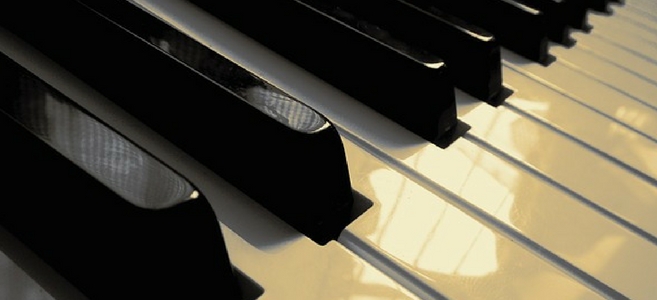
What is the number 1 problem that causes aspiring piano players to quit before they get to an intermediate level? I’ve answered this question more than once and the answer has never really changed.
Reading music is number one on the list. It’s not that most piano students aren’t capable of learning how to read music, they certainly are, but it’s a combination of dilemmas that add to the difficulty.
In no particular order, here are the ones I’ve found: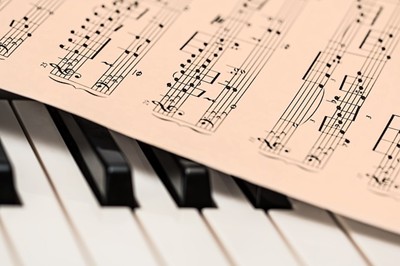
Learning to read traditional sheet music is tedious. You’re taught to play everything as written. If you don’t, you’re doing something wrong. Traditional instructors teach this way because of the nature of classical repertoire and the pianos’ strong ties to it.
If you do reach a proficient level of reading and playing from sheet music, you’re tied to the notes on the page. You’re not encouraged to stray from the written score because after all, following it to the letter is the point of learning this skill in the first place.
A Not So Perfect Arrangement
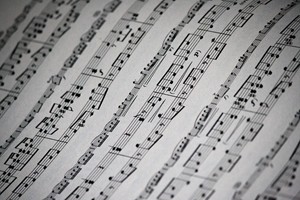 The arrangements that you often find in sheet music are disappointing because more often than not, part or all of it doesn’t sound like the recording of the song in which it’s arranged from. The reason for this is that sheet music for popular songs are arranged at a beginner to intermediate level. If they didn’t do this, they wouldn’t sell much of it so they must cater to the skill level of most students that purchase it.
The arrangements that you often find in sheet music are disappointing because more often than not, part or all of it doesn’t sound like the recording of the song in which it’s arranged from. The reason for this is that sheet music for popular songs are arranged at a beginner to intermediate level. If they didn’t do this, they wouldn’t sell much of it so they must cater to the skill level of most students that purchase it.
Another reason that you may be disappointed in a particular piece of sheet music is that the arranger who put it together may not know the song as well as you do. After all, you may have listened to it for years and know every nuance. The arranger who transcribed it may have just done the minimum to get the song on paper because that’s their job.
Today's article is about how to use a Lead sheet for professional sounding results at the piano. Before I dive into lead sheets, I want to briefly cover the elements of traditional music study so we can contrast them with the simplicity of lead sheets and the freedom they allow you.
The Puzzle of Written Music Revealed
Traditional written music encompasses what is referred to as the grand staff. It’s made of these musical elements:
Staff lines
Staff lines are a series of five horizontal lines in which notes in music are represented by their relative positioning on or in between them. They’re also separated by what is to be played by the right and left hands which places one of them on top of the other. This is signified by a symbol placed on each one of them called a clef.
They’re also separated by what is to be played by the right and left hands which places one of them on top of the other. This is signified by a symbol placed on each one of them called a clef.
Clefs
There are two clefs in sheet music: the treble clef and the bass clef.
The treble clef is placed on the top series of staff lines and signifies the right hand part to be played.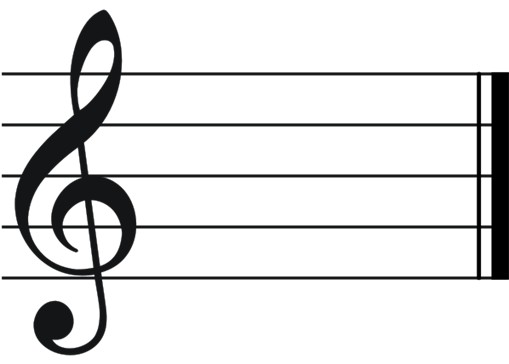 The bass clef is placed on the bottom series of staff lines and signifies the left hand part to be played.
The bass clef is placed on the bottom series of staff lines and signifies the left hand part to be played.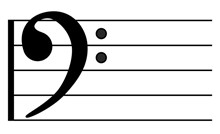 The Grand Staff
The Grand Staff
When the treble and bass clef are grouped together along with a brace that is placed to the very left of them, this creates the grand staff.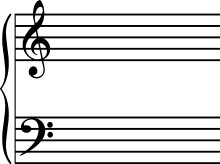 Ledger Lines
Ledger Lines
Ledger lines extend the notes on the staff. They can extend above or below the treble or bass clef. The most common ledger line on the grand staff is the one that signifies middle C.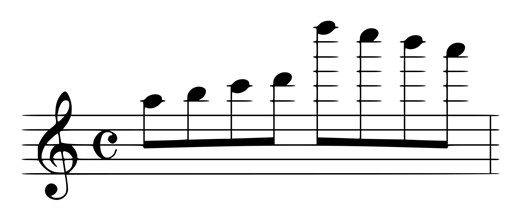 Key Signatures
Key Signatures
A key signature will tell you what key the song is written in. This let’s you know whether the notes you’re supposed to play are all natural (key of C Major) or there are sharps or flats associated with them (any other major key).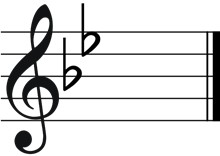 Accidentals
Accidentals
The notes on the grand staff are all natural notes (assuming there’s no key signature telling you otherwise). Accidentals will instruct you to raise or lower a particular note by one key when they’re placed in front of it. A flat instructs you to lower the note down a key. A sharp instructs you to raise the note by one key. A natural sign cancels out a previous accidental and allows you to go back to playing the natural note.

Bars and Measures
The music that is on the staff lines are divided up into measures or bars as some musicians refer to them. Each measure or bar represents a certain number of beats. This creates a pulse in music that can be defined as a rhythm.
 Time Signatures
Time Signatures
The rhythm in the music is governed by the time signature. The time signature dictates how many beats there are within each measure or bar of music. It also tells us what time value the notes are worth. Note Values
Note Values
We’ve covered notes but not the actual time value of them. What I’m referring to is how long a particular note will last when you play it.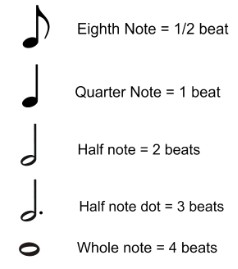 Now that I’ve covered the value of notes, it’s easier to understand the bottom note of the time signature and how it can change the value of all the notes in any given piece of music.
Now that I’ve covered the value of notes, it’s easier to understand the bottom note of the time signature and how it can change the value of all the notes in any given piece of music.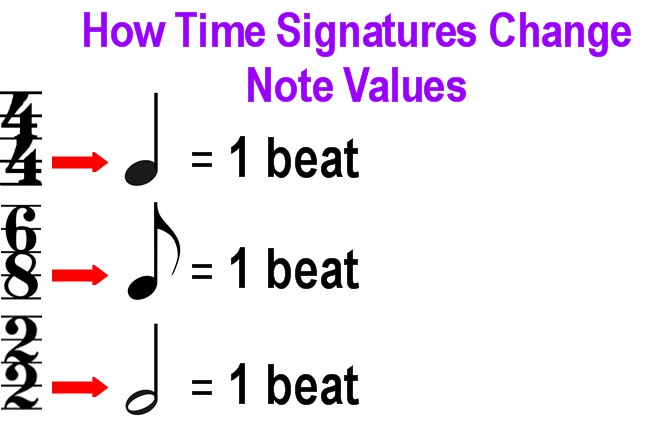 Rests
Rests
You have to take a rest some time. Without rests, music would be a constant barrage of notes that wouldn’t make any sense. Just as notes have values, so do rests. For every note value there’s also a rest with the same value.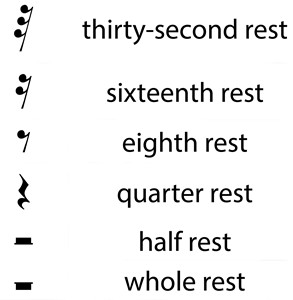 These are the fundamentals of reading music. The more combinations of notes and rests that you have, the more complex a piece of music can be to play from just by strictly reading it. That’s why this article is about the magic of understanding how to use a lead sheet for professional sounding results at the piano.
These are the fundamentals of reading music. The more combinations of notes and rests that you have, the more complex a piece of music can be to play from just by strictly reading it. That’s why this article is about the magic of understanding how to use a lead sheet for professional sounding results at the piano.
You Don’t Have To Get (all of) It In Writing
Based on everything I’ve shared with you about written music shows just how difficult playing the piano can be by reading music alone. It’s a tedious process that takes many years to master. Another aspect of playing music exactly as written is the quality of it sounding like a machine such as a computer. In other words, there’s no feeling when the music is played with a mechanical like approach, as if a machine is playing the music.
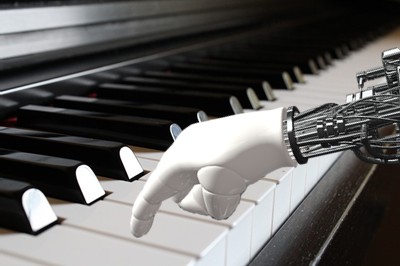
"...there’s no feeling when the music is played with a mechanical like approach, as if a machine is playing the music."
I’m not stating that reading music is bad or that you shouldn’t bother with it at all. But I am saying that there is a difference between playing music and just playing notes. I’m also saying that you shouldn’t just be a note reader. This produces piano players that can’t play anything unless they have the sheet music in front of them.
What I’ve found to be true is that playing the piano is a lot more fun and less work when you use written music only as guide. This means that you don’t play what’s on the page note for note and you may also even take a creative license by playing the tempo, rhythm and other elements the way that you feel like playing them.
A lead sheet allows creative freedom because there’s a minimum of musical information in which you must follow. With less information on the page of course, you need to have some preexisting knowledge to fill in the gaps. Whether you realize this or not, it is definitely a good thing.
Lead On
You’ll see that a lead sheet Is based on traditional written music and doesn’t include all of the written elements that you find within it. Let’s take a look at the magic of understanding how to use a lead sheet.
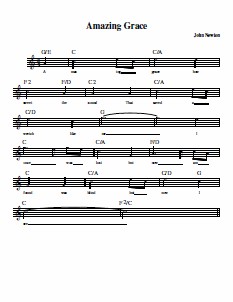 Staffs & Clefs…50% Off
Staffs & Clefs…50% Off
A lead sheet has the same number of staff lines but only has the treble clef. This cuts your note reading in half. You’re free to play everything from the single root of a chord to a left hand bass pattern and everything in between. Time and key signatures work the same way as they do in traditional written music. Notes & Rests
Notes & Rests
Unlike all of the note and rest possibilities that you find in traditional sheet music, lead sheets keep this information simpler. This will depend upon the music itself, but one reason for this is the fact that popular music is much more published than classical music. You actually have a single note melody line that exists in combinations of whole, half, quarter, eighth, and sixteenth notes with rests of the same denominations respectively.
You’ll also have a minimum of ledger lines because regardless of where you are going the play in the registers of the keyboard, the majority of the music is written in the spaces and lines of the staff. This makes it even easier to read. Chord Symbols
Chord Symbols
I can’t recall ever seeing any lead sheets that didn’t have chord symbols. Obviously, a chord symbol is going to tell you what chord to play. Or I’ll also put it like this: it will suggest to you what chord to play. The first instinct a note reader may have is to play the whole chord in the left hand to support the right hand melody.
It’s sometimes done this way, but isn’t always possible because chords can require a voicing that spans more than one octave. The chords are normally voiced in both hands to create a professional sound and make them easier to play. Even though you have a melody line, you don’t necessarily have to play it at all. You can just play the chord structure of the song only and a vocalist or another instrumentalist can play the melody. This would make the lead sheet function more as a chord chart. That’s the flexibility you have with lead sheets.
Even though you have a melody line, you don’t necessarily have to play it at all. You can just play the chord structure of the song only and a vocalist or another instrumentalist can play the melody. This would make the lead sheet function more as a chord chart. That’s the flexibility you have with lead sheets.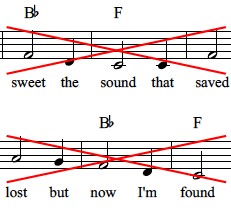 Leading You Into It
Leading You Into It

This lead sheet has colored chord symbols such as the ones found in Color Score.
Here’s a simple lead sheet with a melody and suggested chords. There’s an infinite way to arrange this short piece of music. This is just one of them. Lead sheets have their roots in jazz music. In the early part of the 20th century, they were published by musicians as well as “underground publishers”. A collection of lead sheets would often be assembled in book form. They weren’t legal publications because they didn’t have permission from the actual copyright owners themselves.
Over time, legitimate publishers began producing fake books legally not just for just jazz, but all styles of popular music. Even certain publishers of traditional sheet music have adopted inserting chord symbols above the grand staff due to the increase and demand of piano players that prefer the format.
In fact, if you’ve developed your skill at playing from lead sheets, you can exploit the chord symbols and just the melody of virtually any song that’s published with traditional sheet music.
A Final Word About Lead Sheets
As I stated earlier, there is a minimum amount of information in lead sheets which give you the freedom to arrange songs in a way that sound good to you. But you must have that pre-existing knowledge such as chords, keys of music, rhythms, etc. There's a certain amount of "feeling" the song you're playing that definitely comes from hearing and knowing the song well.
Let me assure you that it's a lot easier than you think so go ahead and take advantage of lead sheets. Just think of lead sheets as a type of musical shorthand that allows you to play a whole lot more notes without reading more notes.
It’s a lot of fun playing your favorite songs the way that you want to play them without all of the work that traditional music reading requires you to do.
Until next time, Go Play.
Greg Lee
Latest posts by Greg Lee (see all)
- What is a minor/Major 7 Chord? - October 26, 2023
- 7 Chord Substitutions that Professionals Use - October 19, 2023
- 5 Simple Chord Tricks to Sound Amazing - October 5, 2023



